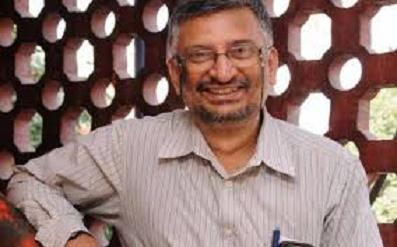India contributes around 25 per cent of the global production in pulses yet, last year, India had to import 5.8 million tons of pulses”, rues Dr Jeet Singh Sandhu, Deputy Director General (Crop Science), Indian Council of Agricultural Research (ICAR), New Delhi. A renowned legume breeder, Sandhu says “with enhanced minimum support price to the farmer, creation of two million tonne buffer stock of pulses, and improved seed varieties we may soon become self-sufficient in pulses”. Having developed twenty two new varieties of different pulses, he is confident that area under pulse crop would increase and soon Indian farmers would take to cultivation of pulses.
Pulses are a rich source of protein, carbohydrates, several vitamins and minerals, and are vital component of Indian diets. They are made up of about 20 to 25 percent of protein by weight – double the protein content of wheat and three times that of rice. Being leguminous in nature, pulse crops have the natural ability to fix nitrogen which contributes to improving soil fertility. Pulse crops can be grown in rotation as they allow future production on the same plot of land. They are also suitable for intercropping as they can facilitate higher underground utilization efficiency due to their root structures. Dr Sandhu says “the best part about pulse crops is that their cultivation requires less water to grow as water is always a big problem in our country”. UN proclaimed 2016 as the International Year of Pulses, keeping in mind the importance pulses have in assuring food security of the world.
Dr Sandhu who worked in Punjab Agricultural University before joining the ICAR, has earned wide acclaim for his contributions to chickpea and cowpea hybridization. He has also worked on inducing disease resistance varieties in moong bean, arhar and soybean which have been well accepted by the farmers. He is an accomplished teacher of plant breeding and genetics and guided several post graduate students at Punjab Agricultural University, Ludhiana. His effort in creating hybrid between cultivated variety and wild variety in chick pea to develop disease resistance varieties was the first ever in the world. He said “we identify varieties which are resistance to diseases and cross them with cultivated variety having other desirable traits.”
" Indian population is mostly vegetarian and pulses form an important component of our diet, supplying the protein requirement, says Sandhu"
“Indian population is mostly vegetarian and pulses form an important component of our diet, supplying the protein requirement”, says Sandhu, emphasize the need for research and development in pulses. He says more than 80 types of pulses are grown across the country, however largely in rain-fed regions, which poses specific challenges to development of new varieties of pulses. Unlike the irrigated area with assured water supply, growing crops, especially pulses, in rain-fed areas needs to withstand the vagaries of the nature. He says “the challenge is to create new varieties that not only with stand pest attack and diseases, but also manage either lower or higher rainfall”.
Although farmers grow pulse in small part of their land, particularly for their own consumption, they are not enthused about cultivating pulses as the returns are generally low. Consumers are wary of the sudden skyrocketing of the price of pulses. “The combined effect of enhanced minimum support price, government policy to go for bulk procurement of pulses from the farmers, and creation of two million tons of buffer stock of pulses” will not only benefit farmers but will also “help in keeping the price of pulses under check”, he says.
Dr Sandhu after his studies joined Punjab Technical University in 1985 where he commenced development of new varieties of pulses, in particular of chickpea. He has published 215 research papers in journals of national and international repute. He developed the guidelines for breeder seeds lifting, and policy planning related to seed. Sandhu supervised the research programs and management of the National Bureau of Plant Genetic Resources (NBPGR) and the National Research Centre for Plant Biotechnology (NRCPB) located at New Delhi and the Directorate of Seed Research located at Mau. (India Science Wire)



